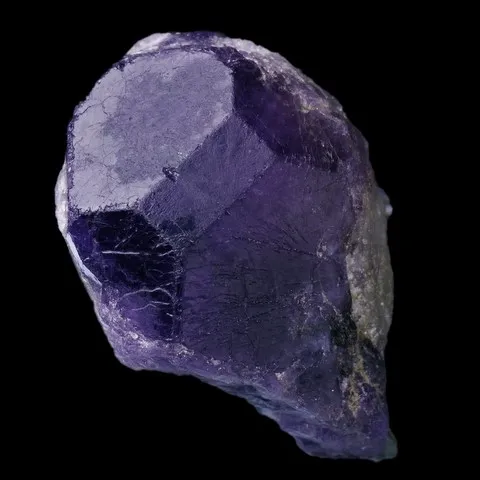SCAPOLITE
Class : Silicates
Subclass : Tectosilicates
Crystal system : Tetragonal
Chemistry : Na4Al3Si9O24Cl to Ca4Al6Si6O24CO3
Rarity : Quite common
The term scapolite (or wernerite), which formerly designated a species, now corresponds to a group, chemically close to feldspar, composed essentially of 2 minerals : meionite (calcium) and marialite (sodium). These two minerals form a complete solid solution with the dipyre (80% to 50% Na) and mizzonite (80% to 50% Ca) as an intermediate variety. Its name comes from the Greek skapos (rod, stick) and lithos (stone), alluding to its elongated shape of its prismatic crystals. The formulas of marialite and meionite recall those of the two poles of the plagioclases, albite and anorthite, with additions of NaCl and CaSO4. The structure is identical to that of feldspathoids. The species of this group appear mainly in the regional metamorphism from amphibolite facies to granulite facies ; they are also known in contact metamorphism (limestone enclaves in lavas or in reaction products between basic rocks and more acidic magma (pegmatoïd), and as a product of plagioclase alteration).
Marialite : its color is variable: colorless, white, gray, bluish, greenish, yellow, pink, purple... The crystals are prismatic, with an octagonal outline, striated parallel to [001], and with very often endings in flattened pyramids ; they can reach 1.5 meter s! Pure marialite is very rare and most specimens are intermediate terms marialite-meionite.
Meionite : its color is variable, usually yellowish to green, it can be colorless, white, rarely pink or purple. The crystals are prismatic, with an octagonal outline, striated parallel to [001], and at the ends very often in flattened pyramids; they can reach 70 cm. Pure meionite is very rare and most specimens are intermediate terms marialite-meionite.
The scapolite remains relatively unknown to mineral collectors, it is sometimes cut for jewelry.
Scapolite in the World
Meionite : In Tsarasaotra (Madagascar), meionite is presented in prismatic striated, limpid and subtly amber crystals (champagne color), of several centimeters. Large decimetric crystals are known near Irkutsk (Siberia) and in Massachussets (Bolton). The Brazilian state of Espirito Santo supplies superb 10 cm "champagne" crystals, and Gooderham (Ontario, Canada) beautiful pink crystals of several centimeters. Meionite has been known for a long time in metamorphic limestones discharged by the lava of Somma and Vesuvius.
Scapolite in France
In France, the largest crystals come from Casteroulot de Charot, Betchat (Ariège), they are transformed into quartz, albite, clinochlore and calcite and can exceed 10 cm.
Twinning
No twinning known for this mineral species.
Fakes and scams
Rumors circulate on the web concerning the improvement of the color of certain scapolites by irradiation, however this treatment is currently not demonstrated. The color of some scapolite is not stable, the crystals can lose their color quickly if exposed to direct sunlight.
Hardness : 5 to 6
Density : 2.5 to 2.78
Fracture : Irregular to conchoidal
Streak : White
TP : Opaque to transparent
RI : 1.532 to 1.562
Birefringence : 0.007-0.009 (marialite)
0.034-0.038 (meonite)
Optical character : Uniaxial -
Pleochroism : Weak
Fluorescence : Yellow, orange to red
Solubility : Hydrochloric acid
Magnetism : None
Radioactivity : None





